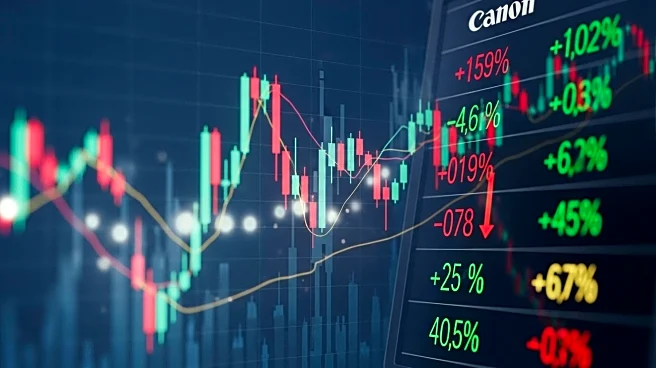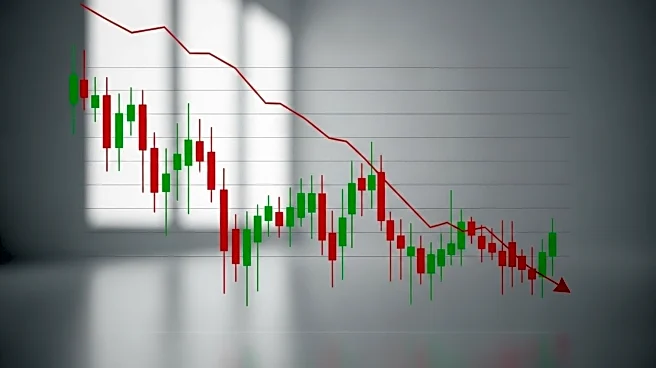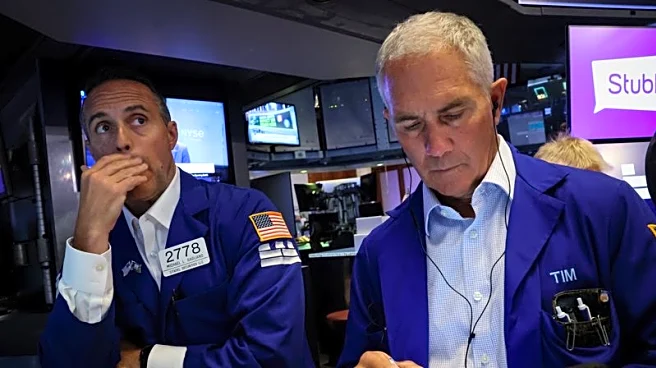What's Happening?
U.S. stock futures showed an upward trend ahead of Monday's trading session, following a week where major indexes closed lower due to growing concerns over a potential AI bubble. The Nasdaq 100, Dow Jones Industrial Average, and S&P 500 Index futures rose by 0.39%, 0.27%, and 0.31%, respectively. This movement comes after Federal Reserve Chair Jerome Powell highlighted concerns about stretched equity valuations, particularly in the technology and AI sectors. The market's apprehension was further fueled by the 'circular nature' of AI-related deals, such as Nvidia's $100 billion partnership with OpenAI. Despite these concerns, U.S. indexes ended higher on Friday, supported by August's Personal Consumption Expenditures data aligning with expectations and consumer spending increasing by 0.6% month-over-month.
Why It's Important?
The recent fluctuations in the stock market underscore the volatility and uncertainty surrounding the AI sector's growth and its impact on broader economic conditions. The Federal Reserve's caution regarding equity valuations suggests potential risks for investors, particularly those heavily invested in technology stocks. The market's response to these concerns could influence investment strategies and economic forecasts. Additionally, the upcoming release of September's non-farm payrolls and unemployment rate reports will be crucial in assessing the labor market's health and guiding future monetary policy decisions. Companies like Jefferies, Carnival, Nike, Conagra Brands, Delta Air Lines, PepsiCo, and Levi Strauss are set to report earnings, which could further impact market dynamics.
What's Next?
Investors are expected to closely monitor the release of September's non-farm payrolls and unemployment rate reports, which will provide insights into job creation and employment trends. These reports are critical for understanding the labor market's trajectory and could influence Federal Reserve policy decisions. Additionally, the earnings reports from major companies will be scrutinized for indications of consumer demand and economic resilience. The market's response to these developments will likely shape investment strategies and economic outlooks in the coming weeks.











